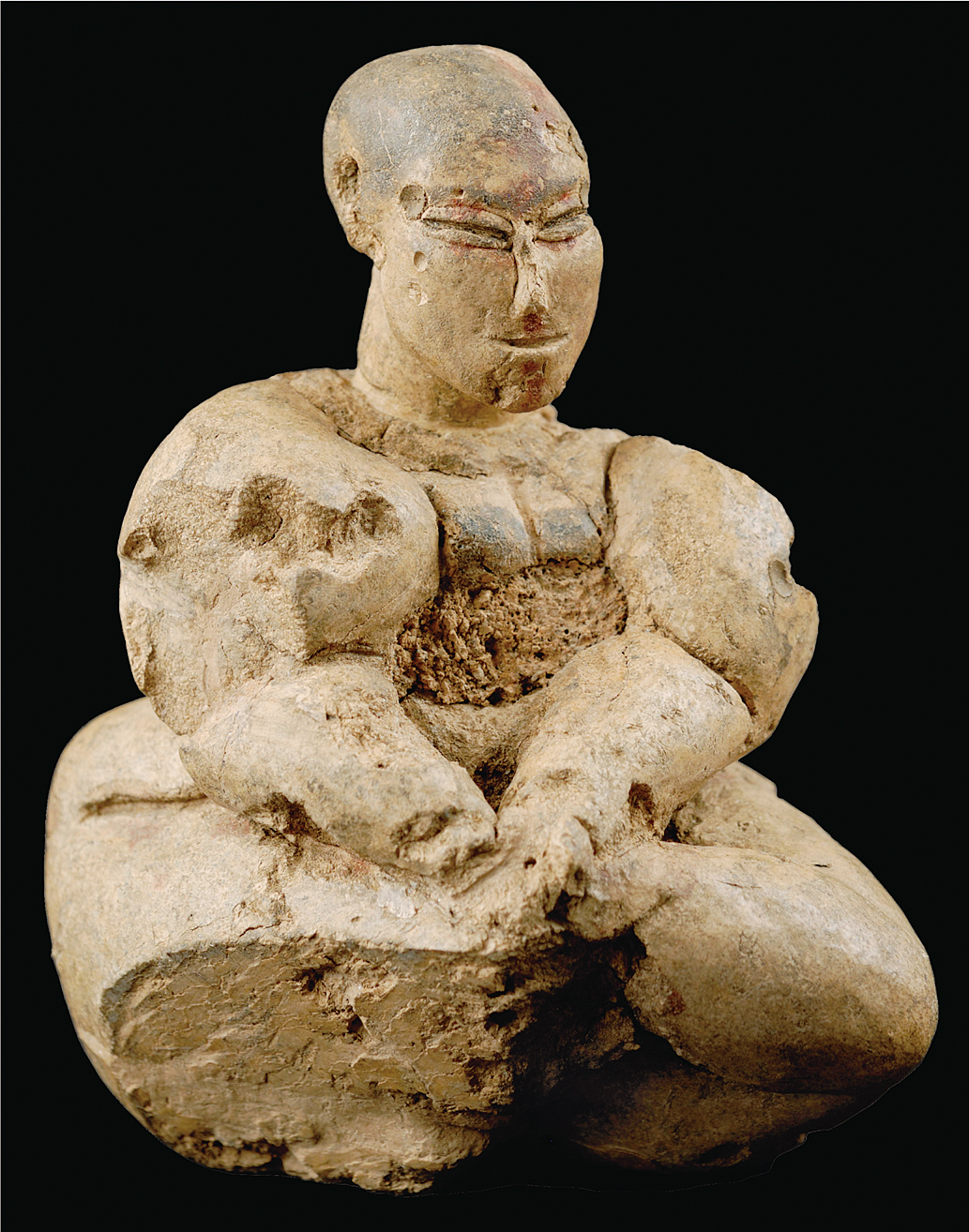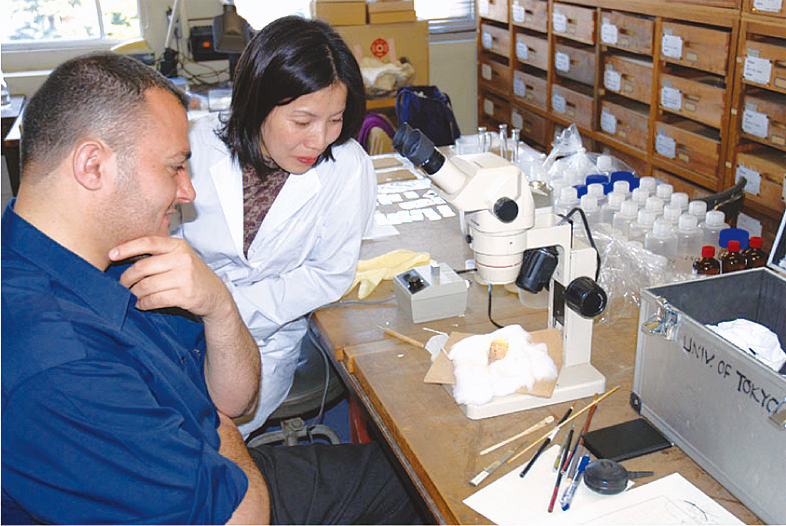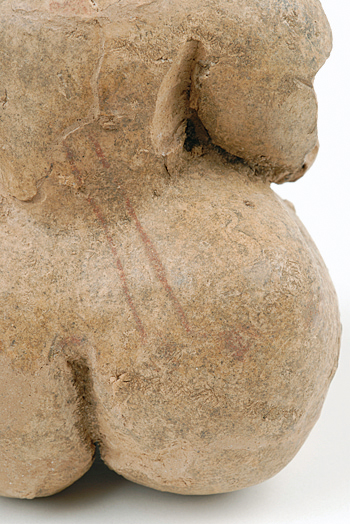B54
A Neolithic female figurine from Syria
the oldest “Mother Goddess” in Mesopotamia
One of the characteristic archaeological finds from Neolithic sites in Mesopotamia is the female figurine. The emphasis on the representation of breasts and buttocks suggests their role as a symbol of fertility in early food-production societies. Figurines surviving in the archaeological record, made mainly of clay or stone, are usually small, less than 5 cm in height, and rarely depict details of the head and face. Larger ones with artistic representations, such as the well-known Pottery Neolithic examples of Çatalhöyük, Turkey, became common only from the mid-7th millennium BC onwards. The figurine described here is from our excavations at the Neolithic settlement of Tell Seker al-Aheimar, Northeast Syria. It is really unique because of its remarkably large size (ca. 14.2 cm high); highly elaborate artistry; and age, as it dates to the Late Pre-Pottery Neolithic of ca. 7000 BC. This figurine depicts a seated female with realistic modeling and bi-chrome painting decoration. There has been no parallel for this figurine from Pre-Pottery Neolithic sites in Mesopotamia and beyond in the Middle East, raising issues to be discussed on its culture-historical and functional significance. Its general features indicate prolonged use as well as the importance attached to it by society. In addition, the fact that the figurine was discovered from a sub-floor also suggests its distinguished function, reminiscent of sub-floor human burials popular in the earlier Pre-Pottery Neolithic. This discovery context is a marked contrast to that of ordinary figurines from Tell Seker al-Aheimar, which were recovered mostly from ovens and open-air deposits. It is likely that this figurine played a particular role indeed as the “Mother Goddess” in this society, while the ordinary figurines were of short-term use as amulets. In terms of the artistic tradition, the most comparable examples have been found at Samarran sites of the Pottery Neolithic in Iraq, and date to the mid-7th millennium BC and later. Although significantly smaller in size and created more schematically, they show similarities in their posture as well as the representation of their faces. The current evidence suggests that this figurine could represent a forerunner of the ritual system that became prevalent later in Mesopotamia. (Yoshihiro Nishiaki)
References
西秋良宏(編)(2008)『遺丘と女神—メソポタミア原始農村の黎明』東京大学出版会。
Nishiaki, Y. (2007) A unique Neolithic female figurine from Tell Seker al-Aheimar, Northeast Syria. Paléorient 33(2): 117–125.
Nishiaki, Y. (2008) Naissance des Divinités: Figurine feminine exceptionnelle du néolithique. Damascus: Ministère de la Culture, Direction Générale des Antiquités et des Musées.



